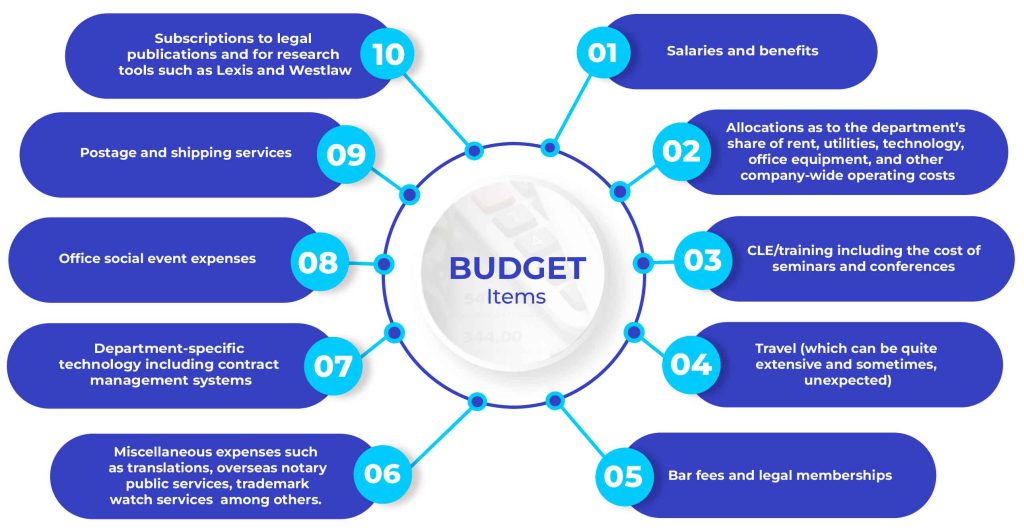“The very first thing you need to do when preparing an annual legal department budget is to understand and account for all the different items that make up the budget. If you forget something, you can end up with some big, costly holes. So, it’s worth sitting down and thinking hard about it.”
Thomson Reuters has issued its 2022 Legal Department Operations (LDO) Index Survey, and as expected, the report reveals that last year, in-house corporate legal departments continued to face serious pressures as to controlling costs, dealing with an increase in workloads, and staff fulfillment problems. Given the recent global economic uncertainties, and the rise of new and somewhat uncharted legal issues regarding the adoption of ESG priorities, in-house legal is facing strains that did not exist just a few years ago.
One would think that the advancement of new technologies would offer an assist to relieve some of that pressure, yet, just the opposite is true, as the integration of rapidly evolving AI and other technologies places additional demands on in-house legal departments. We will examine ways to lessen the budget burden and increase efficiency while keeping pace with department demands.
The Move to In-house
The address change for legal spend seems to be a cyclical phenomenon, with some eras experiencing a trend towards greater utilization of outside counsel while other years see the opposite trend of moving the corporate legal department back in-house. We are currently in the latter cycle. While some entities reasoned that it would be cheaper to pay an inside legal department than cope with the ever-increasing rise in fees paid to outside counsel, not all companies properly planned for the move nor anticipated what the real costs would be.
Legal Department Budget Basics
Although different organizations might allocate certain company-wide expenses to different departmental budgets, according to Sterling Miller, a Chief Compliance Officer and General Counsel with 25 years’ experience, the following are items which should be a part of an in-house legal department budget but sometimes are presumed to be budgeted elsewhere:

Lastly, the in-house legal department budget cannot ignore the fact for some matters, yes, outside counsel will still need to be retained.
Make Use of Available Resources
The corporate finance department is there for a reason, and the manager of the in-house legal department should not only refer to the CFO but also fully involve him or her in the budget planning process. The other most important resource is the legal team that you work with. True forecasting can only come from the parties who already have a track record from last year and who can therefore render input as to where the department’s financial support fell short of what was needed, as well as provide a picture of anticipated needs going forward based on what projects are in the pipeline or scheduled for the coming fiscal year.
Shifting Priorities
Despite the fact that previous years’ budgets typically can—and usually do—serve as a guidepost for the current financial planning of your in-house legal department, new realities on the ground can make such reliance on past planning less than useful. 2022 saw a significant increase in the volume of legal matters imposed upon corporate legal departments, and in addition, unaccustomed issues such as corporate environmental practices and ESG policymaking and implementation—which are rising in importance— have further encumbered in-house legal staff workloads. Furthermore, many legal departments have not been adequately prepared to deal with the emergence of these new areas of practice.
Capitalizing on Legal Tech
As with most aspects of corporate operations and governance today, advanced technology needs to be aggressively employed in furtherance of in-house legal department needs and efficiency. Although in-house legal departments have been rather hesitant to adopt automation—a characteristic of the legal profession in general—the COVID-19 pandemic informed the profession that such resistance was no longer practical nor affordable. Rather, investment in technology that aids various legal functions, especially regarding compliance and transactional work, is now a necessity.
As succinctly summarized by Zack Hutto, Director, Advisory at IT consulting company Gartner: “The new pressures brought about by the coronavirus pandemic certainly have acted as a catalyst for this shift. Legal and compliance teams have rarely been frontrunners to modernize, digitalize and automate. The pandemic has flattened staffing budgets and increased legal workloads; technology is the most obvious solution for many legal departments.” Accordingly, in-house legal must carefully weigh which technologies to embrace in order to drive desired outcomes.
In sum, regardless of where the new pressures and demands come from, in-house legal department managers will have to rise to these challenges and address them head-on in order to maintain productive and efficient corporate legal operations.
Executive Summary
The Issue
How to structure in-house legal department budgets given the unprecedented challenges facing in-house legal?
The Gravamen
The shift to more in-house legal operations, as opposed to the utilization of long-established outside counsel models, demands that greater attention be paid to the nuances of legal-spend budgeting.
The Path Forward
In-house legal departments will have to shoulder an increasing workload which includes much previously uncharted territory, all while maintaining financial and operational efficiency.
Action Items
Listen to Your Team:
Budget planning input should be both bottom-up and horizontal, involving members of the in-house legal team as well as corporate finance managers.
Department-Specific Allocations:
Don’t assume that shared operational expenses will necessarily be expensed only from a general budget, as opposed to being proportionally shared by your own department’s budget.
Devil Is in The Details:
Avoid end-of-year budget shortfall surprises by plugging in every conceivable expense line item that you and your input team can think of, and don’t hesitate to draft multiple versions before finalizing.
Future Planning:
The realities of the past three years have taught us that the operations of an in-house legal department are far from static but rather quite dynamic. Plan for the expenses associated with new practice areas and necessary technologies that were likely not a part of previous budget considerations.
Further Readings
- https://www.gartner.com/smarterwithgartner/5-legal-technology-trends-changing-in-house-legal-departments
- https://www.law.com/corpcounsel/2022/06/14/in-house-spending-eclipses-outside-spending-in-new-legal-department-benchmarking-survey/
- https://www.globallegalpost.com/news/corporate-legal-spend-shifts-more-in-house-report-finds-828184374
- https://www.inhouselawyer.co.uk/legal-briefing/smarter-legal-budgeting/
- https://abovethelaw.com/2022/12/79-percent-of-in-house-legal-departments-report-strained-budgets-and-all-100-percent-of-those-report-increased-workloads/
- https://www.thomsonreuters.com/en-us/posts/legal/ldo-index-report-2022/







